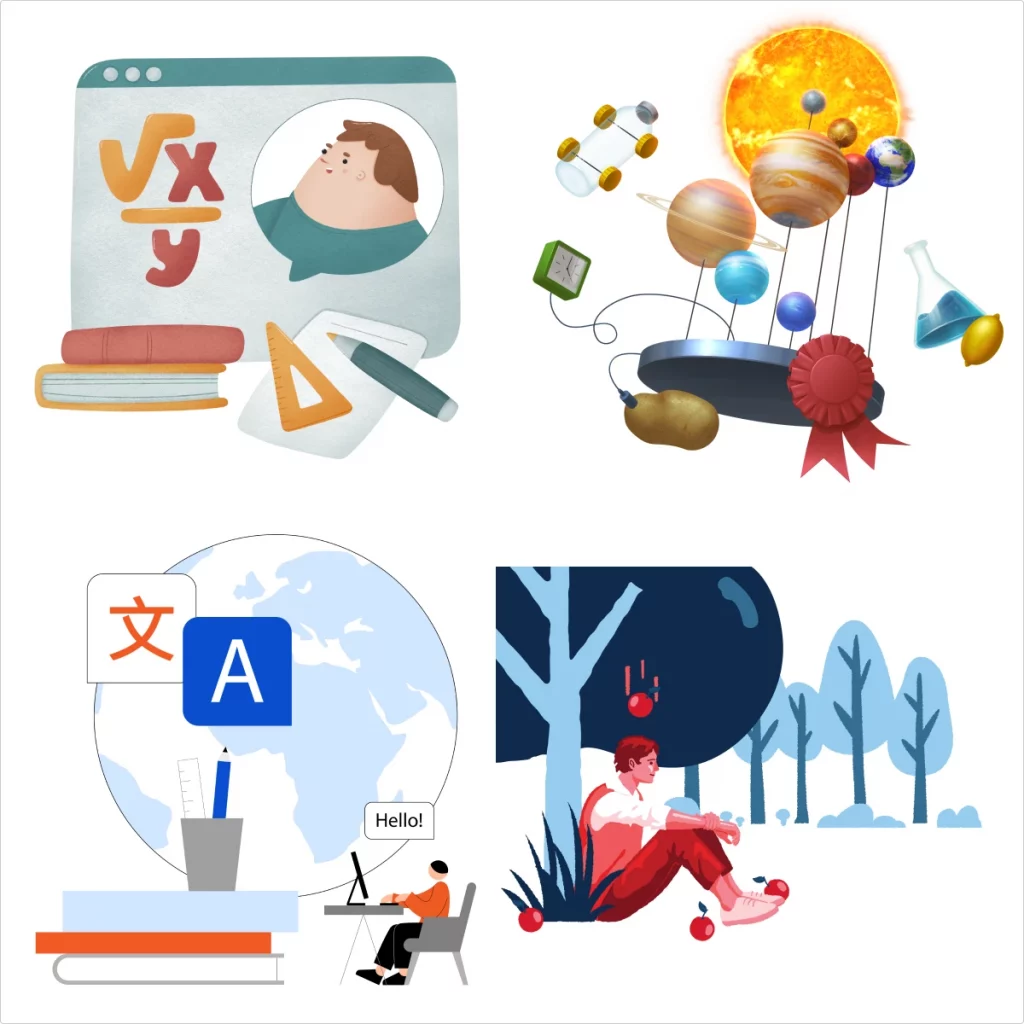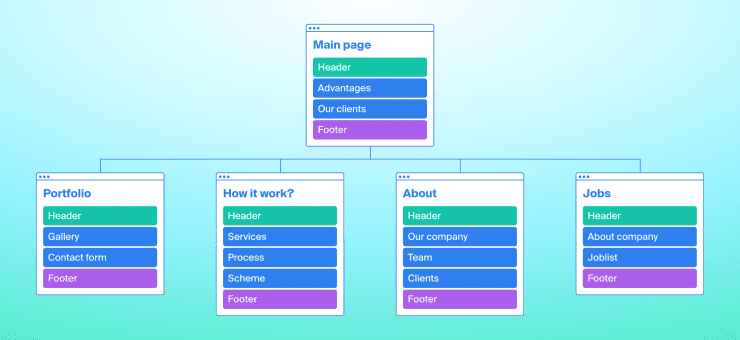Transform your presentations into engaging, memorable journeys. Discover how clarity, consistency, and captivating visuals can elevate your teaching.
Distractions are everywhere, and to snag student’s attention, you need more than facts. You need standout visuals. This is where presentation graphics step up, turning dull lessons into dynamic ones. With our vivid illustrations, you can shift from mere showing to truly engaging.
Here, we dive into creating presentation graphics that not only teach but also captivate, making sure students remember your message well after class is over.
Ouch! education illustrations
1. Enhancing visual appeal
- Select relevant illustrations. Choose illustrations that align with your content to add visual interest and aid comprehension. The right image can clarify concepts and make your slides more engaging.
- Consistent style. Ensure that the illustrations you select maintain a consistent style throughout the presentation to create a cohesive look and feel.
2. Illustrations as teaching tools
- Simplify complex ideas. Use illustrations to break down complex ideas into more understandable components. A well-chosen image can often explain a concept more effectively than text alone.
- Facilitate memory retention. Visual aids can help students remember information. Incorporating illustrations can make key points more memorable.

3. Interactive elements
- Create interactive discussions. Use illustrations as prompts for discussion or as part of interactive activities. This can make learning more active and engaging.
- Encourage creativity. Challenge students to interpret or create their own meanings from the illustrations, fostering a deeper connection with the material.

By thoughtfully integrating presentation graphics, you can create more engaging and effective teaching presentations, leveraging visuals to enhance understanding, retention, and interaction.
The 3 rules of presentation design
When crafting presentations that captivate and educate, keep these three fundamental rules in mind:
1. Clarity comes first
- Purpose and message. Every slide, every graphic, and every word in your presentation should serve a clear purpose. Distill your message to its essence and ensure that your audience can grasp it quickly and effortlessly.
- Simplicity in design. Avoid clutter. Use space generously to let your content breathe. A clean, minimal design helps focus attention on what matters most—your message.
- Readable text. Choose fonts and sizes that are easy to read from a distance. Your audience shouldn’t strain to decipher what’s written.
2. Consistency is key
- Visual theme. Maintain a consistent visual theme throughout the presentation. Use a cohesive color scheme, typography, and imagery style to create a unified look and feel.
- Transitions and animations. Use these sparingly. Consistent use of transitions and animations can enhance understanding, but overuse can be distracting.
- Repetition of core ideas. Reinforce key points through repetition to aid retention. Consistently recalling core ideas helps embed them in the audience’s memory.
3. Engagement through relevance
- Know your audience. Tailor your presentation to the interests, expectations, and level of understanding of your students. Connecting the content to their experiences or challenges increases engagement.
- Interactive elements. Whenever possible, incorporate elements that require audience participation. This could be through live polls, Q&A sessions, or thought-provoking prompts to stimulate interaction.
- Storytelling. Use narratives to make your point. Stories are not only more memorable but can also humanize complex data and abstract concepts, making them more relatable and engaging.
By adhering to these three rules—clarity, consistency, and engagement—you can design presentations that capture attention and enhance learning and retention.
No matter if you’re presenting to a large lecture hall or engaging a few learners online. These core principles pave the way for presentations that are both impactful and memorable.
How do you make a good teaching presentation?
Creating a teaching presentation that resonates with your audience involves more than just delivering content. It’s about crafting an experience that educates, engages, and inspires. Here’s how:
1. Start with a strong foundation
- Define clear learning objectives. Begin by establishing what you want your audience to learn or take away from your presentation. These objectives should guide your content and delivery.
- Organize content logically. Structure your presentation in a way that flows naturally and makes sense to your audience. Start with an introduction that sets the stage, followed by the main content, and conclude with a summary that reinforces key points.
2. Design for engagement
- Incorporate visuals. Use relevant images, diagrams, and infographics to illustrate points and make your content more digestible. Remember, a picture is worth a thousand words.
- Variety in presentation styles. Mix up your presentation techniques to maintain interest. This could include storytelling, demonstrations, or case studies, depending on your subject matter.
- Interactive elements. Plan for interactivity, whether it’s through discussion prompts, live polls, or short activities that allow the audience to apply what they’ve learned.
3. Connect with your audience
- Understand their background. Tailor your presentation to the knowledge level and interests of your audience. This ensures that your content is relevant and engaging to them.
- Encourage questions and feedback. Make your presentation a two-way street by inviting your audience to ask questions or share their thoughts. This not only increases engagement but also helps you tailor your message and clarify any points on the spot.
- Be passionate and energetic. Your enthusiasm can be contagious. A passionate delivery can help keep your audience interested and make the learning experience more enjoyable.
4. Reflect and adapt
- Seek feedback. After your presentation, gather feedback to understand what worked well and what could be improved. This can be through direct feedback from your audience or by reflecting on your own performance.
- Iterate and improve. Use the insights gained from each presentation to refine your approach and content. Continuous improvement will make your future presentations even more effective.
By focusing on these key aspects, you can create teaching presentations that not only convey information but also inspire and engage your audience, leading to a more impactful learning experience.
Wrapping up
Lean on Icons8 for presentation visuals that don’t just decorate but deeply resonate, making tough concepts a breeze to grasp. It’s about stirring curiosity, boosting retention, and making each slide a stepping stone to learning that lasts.
Bottom line: blend smart content with sharp design and empathetic delivery. Use visuals wisely, make every slide count, and turn your presentations into a launchpad for engaging and effective learning. Let’s make learning not just informative but downright unforgettable.








